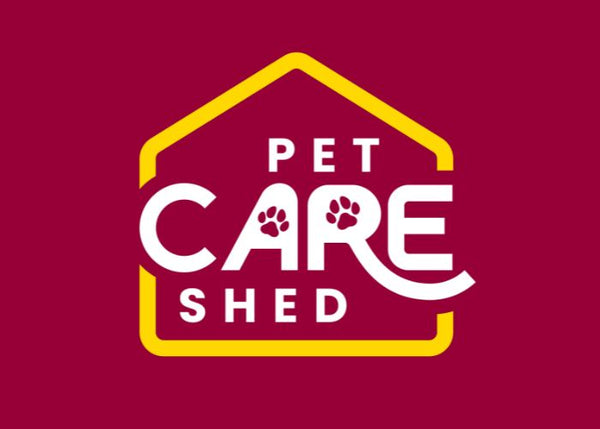Pet Supplies

Whippets Dog Breed in Australia? Temperament, E...
The Whippet stands out as one of the most visually striking and temperamentally appealing breeds for Australian dog lovers. Known for their slender, aerodynamic build and graceful movement, Whippets embody...
Whippets Dog Breed in Australia? Temperament, E...
The Whippet stands out as one of the most visually striking and temperamentally appealing breeds for Australian dog lovers. Known for their slender, aerodynamic build and graceful movement, Whippets embody both elegance and athleticism—a balance that has captivated pet owners worldwide, and particularly here in Australia, where an active outdoor lifestyle is highly valued.

Choosing the Right Bowl Size for Small Dogs - P...
Little dogs do best with bowls of 250–350 ml. Opt for one with a shallow rim and a base width of about 10-15 cm. Shallow bowls allow short snouts and...
Choosing the Right Bowl Size for Small Dogs - P...
Little dogs do best with bowls of 250–350 ml. Opt for one with a shallow rim and a base width of about 10-15 cm. Shallow bowls allow short snouts and little jaws access to food or water. In Australia, stainless steel and ceramic are popular due to hygiene and wipe-down cleaning. Non-slip bases prevent sliding on tiled or wooden floors, which comes in useful for many Aussie homes.

DIY Dog Beds: 5 Creative Projects to Try This W...
Every Australian dog deserves a bed that is as comfortable, secure, and unique as they are. While pet stores offer a range of ready-made options, more pet owners are discovering...
DIY Dog Beds: 5 Creative Projects to Try This W...
Every Australian dog deserves a bed that is as comfortable, secure, and unique as they are. While pet stores offer a range of ready-made options, more pet owners are discovering the benefits of creating their own dog beds at home. Not only does a DIY approach allow you to customise the bed to perfectly suit your pet’s size, sleeping style, and health needs, but it also offers an opportunity to be creative, eco-friendly, and budget-conscious.

Personalised Dog Bowls for Small Breeds
These options are for pups under 10kg and provide custom engraving or printing! Local Australian retailers like Petbarn, My Pet Warehouse and Indie online stores on Etsy or Hardtofind offer...
Personalised Dog Bowls for Small Breeds
These options are for pups under 10kg and provide custom engraving or printing! Local Australian retailers like Petbarn, My Pet Warehouse and Indie online stores on Etsy or Hardtofind offer a smorgasbord of bowlicious options. These bowls are designed specifically for miniature mouths and cute names, in all kinds of colours and shapes. A lot of local makers allow you to choose size and font, or even include paw prints.

Is Your Dog’s Bed Making Them Sick? The Complet...
A dog’s bed is more than just a spot for a daily nap—it’s a place of comfort, security, and rest for your four-legged family member. Yet beneath the soft cushions...
Is Your Dog’s Bed Making Them Sick? The Complet...
A dog’s bed is more than just a spot for a daily nap—it’s a place of comfort, security, and rest for your four-legged family member. Yet beneath the soft cushions and cozy covers, an unwashed dog bed can quickly become a hotspot for hidden dangers. Australian pet owners, in particular, face unique challenges: our warm, sometimes humid climate, the frequent in-and-out lifestyle of our dogs, and the proximity of native wildlife all increase the risk of pests and germs thriving where our pets sleep.
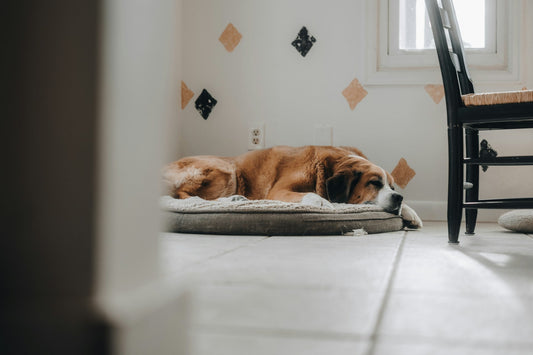
Are There Hypoallergenic Dog Beds for Sensitive...
Australia’s pet owners are renowned for treating their dogs as part of the family. But what happens when your beloved companion develops itchy, irritated skin—or worse, shows signs of allergies?...
Are There Hypoallergenic Dog Beds for Sensitive...
Australia’s pet owners are renowned for treating their dogs as part of the family. But what happens when your beloved companion develops itchy, irritated skin—or worse, shows signs of allergies? For many dogs, sensitive skin isn’t just a minor nuisance; it can disrupt their sleep, happiness, and overall health.

Best DIY Dog Bed Ideas Using Recycled Materials
In recent years, more Australian pet owners are turning to sustainable and eco-friendly solutions when caring for their furry companions. Among the most popular trends is the creation of DIY...
Best DIY Dog Bed Ideas Using Recycled Materials
In recent years, more Australian pet owners are turning to sustainable and eco-friendly solutions when caring for their furry companions. Among the most popular trends is the creation of DIY dog beds using recycled materials. Not only does this approach save money, but it also offers a unique opportunity to reduce environmental impact while providing a comfortable, custom-made sleeping spot for your dog.

Why Your Dog’s Bed Could Be Causing Allergies: ...
Key Takeaways Dog beds can be a hidden source of allergies for both dogs and humans, harbouring dust mites, mould, dander, and chemical residues. Allergy symptoms may appear as itching,...
Why Your Dog’s Bed Could Be Causing Allergies: ...
Key Takeaways Dog beds can be a hidden source of allergies for both dogs and humans, harbouring dust mites, mould, dander, and chemical residues. Allergy symptoms may appear as itching, sneezing, coughing, skin rashes, or breathing issues in pets and people. Certain bedding materials and poor cleaning routines increase allergy risk, especially in Australia’s variable climate. Regular cleaning and choosing hypoallergenic dog beds can greatly reduce allergen build-up in your home. Australian pet owners can minimise allergies by following expert cleaning advice, selecting safe bedding materials, and consulting local vets if symptoms persist. Introduction A good night’s sleep is vital for your dog’s health and happiness, but have you ever considered whether your pet’s bed might be doing more harm than good? For many Australian pet owners, dog beds are an afterthought—simply a soft spot for their furry friend to rest. Yet, beneath those cosy layers can lurk allergens that may affect not just your dog, but also your family. Allergic reactions linked to pet bedding are on the rise, especially as more households welcome pets indoors and prioritise their comfort. Whether it’s your dog constantly scratching or a family member sneezing when near the dog bed, these seemingly minor issues might actually point to a larger problem: your dog’s bed could be the source of persistent allergies. In this article, we’ll explore how dog beds can cause allergies, identify the main triggers, and provide practical solutions to keep your home and pets healthy. With Australian data, quotes from local experts, and step-by-step advice, you’ll learn how to transform your dog’s bed from an allergy hotspot into a safe, comfy haven. Understanding Allergies: A Simple Explanation Allergies are exaggerated immune responses to substances that are usually harmless—like dust, pollen, or pet dander. In both dogs and humans, allergies can manifest in various ways, from mild sneezing and itching to more severe symptoms like skin rashes or asthma attacks. Common signs of allergies in dogs include: Itchy or red skin Excessive scratching or licking Ear infections Watery eyes or runny nose Hair loss or hot spots For humans, allergy symptoms often appear as: Sneezing and runny nose Itchy, watery eyes Skin rashes or hives Wheezing or difficulty breathing Allergens don’t just float in the air—they settle on surfaces, especially soft furnishings like dog beds. As your dog sleeps, rolls, and scratches, these allergens get stirred up and can easily be inhaled or come into contact with skin. Dr. Katherine Dale, an Australian veterinary dermatologist, explains: “Dog beds are a common but overlooked source of allergen exposure. Both pets and people can suffer, especially in homes where cleaning routines aren’t robust or bedding materials aren’t chosen carefully.” In short, if your dog or your family is experiencing ongoing allergy symptoms, it’s worth taking a closer look at the bed your dog spends hours on each day. How Dog Beds Can Trigger Allergies Dog beds seem like harmless comfort zones, but they are often a significant source of allergens in the home. These allergens can affect not just your dog, but you and your family as well. Understanding exactly how and why this happens is the first step to solving the problem. Materials Used in Dog Beds and Common Allergens The materials used to construct dog beds can be a major contributor to allergy issues. Many beds are filled with synthetic foams, polyester fibres, or treated cotton, all of which can harbour dust mites and trap pet dander. Some imported beds may even be treated with chemical flame retardants or anti-fungal agents that can trigger sensitivities in both humans and pets. Common materials that may cause problems include: Polyester fibre filling: Attracts and traps dust mites. Memory foam: Can retain moisture, creating an environment for mould. Treated cotton or fabrics: Chemical treatments may irritate sensitive skin. The Role of Dust Mites, Mould, and Pet Dander Dust mites are microscopic creatures that feed on dead skin cells shed by both dogs and humans. They thrive in warm, humid environments—like your dog’s bed. Their droppings are highly allergenic and are a leading cause of indoor allergies (Australian Society of Clinical Immunology and Allergy). Mould and mildew can develop in dog beds that become damp from dog saliva, urine, or a humid environment, particularly in parts of Australia prone to high humidity or wet weather. Mould spores are a potent trigger for allergic reactions. Pet dander (tiny flakes of skin and hair) builds up quickly in soft bedding. It is a primary cause of allergies in people, and even dogs can become sensitive to the buildup of their own or other animals’ dander. Chemical Treatments and Manufacturing Residues Dog beds, especially lower-priced or imported products, may contain chemical residues from manufacturing, such as formaldehyde, dyes, flame retardants, or anti-microbial agents. Over time, these chemicals can off-gas or leach out, contributing to allergic responses. This is particularly concerning for young children or pets with sensitive skin. Dr. Alex Hynes, veterinarian and host of Bondi Vet, notes: “Chemical sensitivity is a growing problem, especially for dogs with pre-existing allergies. Choosing bedding with minimal or no chemical treatments is an important step in preventing unnecessary reactions.” Case Study: Real Examples from Australian Homes A family in Brisbane noticed their Labrador developing recurring skin rashes and constant itching. After ruling out food allergies and fleas, their vet suggested switching to a hypoallergenic dog bed made of natural, untreated cotton. Within a few weeks, the dog’s symptoms dramatically improved. Similarly, a Sydney-based pet owner struggled with her child’s constant sneezing and discovered, through allergy testing, that dust mites in the dog’s bed were a significant culprit. Identifying the Signs: Is Your Dog’s Bed the Culprit? Pinpointing the source of allergies can be challenging, especially when symptoms overlap with other common issues. However, if you notice persistent health concerns in your household—either in your dog or in family members—it’s wise to consider the dog’s bed as a possible trigger. Symptoms of Allergies in Dogs If your dog is suffering from allergies caused by its bed, you might observe: Frequent scratching, licking, or biting at the skin Red or inflamed skin, especially on the belly, paws, or face Chronic ear infections Hair loss or “hot spots” Watery eyes, sneezing, or nasal discharge Restless or disrupted sleep patterns According to Greencross Vets, these symptoms can often worsen at night or after your dog spends time resting on its bed. If you notice that your dog seems better after spending time away from its bedding—or symptoms return after lying on the bed—this could be a key clue. Symptoms of Allergies in Humans Humans can also react to allergens that accumulate in dog beds, particularly if the bed is in a shared space such as the living room or bedroom. Watch for: Sneezing, runny or stuffy nose Itchy, watery, or red eyes Coughing, wheezing, or difficulty breathing Skin irritation, hives, or eczema flare-ups Worsening of asthma symptoms (especially in children) If symptoms improve after cleaning or replacing the dog bed, this is a strong indicator that the bed was contributing to the issue. When to Suspect the Bed: Key Patterns and Clues Ask yourself: Do symptoms coincide with your dog spending time on their bed? Are symptoms worse after cleaning or fluffing the bed, which might stir up dust and dander? Does the bed have a musty smell, or can you see signs of mould, dust, or dirt build-up? Do symptoms improve when your dog sleeps elsewhere or when the bed is washed? If you answer “yes” to any of these, it’s time to take a closer look at the dog’s bed. Expert Insight Dr. Rob Zammit, an Australian veterinarian and pet health advisor, shares: “Many owners overlook bedding as a source of allergens, focusing instead on food or environmental factors. In reality, unwashed or low-quality dog beds are one of the most common sources of ongoing skin and respiratory issues for both pets and people.” The Science Behind Allergens in Dog Beds Understanding how allergens build up in dog beds helps pet owners tackle the root of the problem rather than just treating the symptoms. Beds are designed to be soft, warm, and inviting, but these same characteristics create the ideal environment for allergens to accumulate and thrive. How Allergens Accumulate in Bedding Materials Dog beds are exposed daily to fur, skin cells, sweat, saliva, and even the dirt your dog brings in from outside. Over time, these materials penetrate deep into the fabric and filling, creating a haven for: Dust mites, which feed on shed skin cells. Mould spores, thriving in damp or humid conditions. Pet dander and hair, which stick to fabrics and fibres. Chemical residues that may not wash out completely. A 2022 review published by the Australian Society of Clinical Immunology and Allergy highlights that soft furnishings—like bedding and couches—are major reservoirs for household allergens. Because dog beds are often overlooked in cleaning routines, allergen levels can become higher than in human bedding. Scientific Studies and Expert Commentary A 2019 study in the Journal of Veterinary Dermatology found that up to 90% of dog beds tested in Australian homes contained dust mite allergens at levels known to trigger reactions in sensitive pets and people.Link: Veterinary Dermatology Journal PetMD’s dog bed care guide (PetMD Dog Bed Care) advises: “Regular and thorough cleaning of pet bedding is essential for controlling allergen exposure. Failing to wash pet bedding frequently can lead to an increase in allergens, especially in households where pets have direct contact with beds and couches.” The Impact of Australia’s Climate on Allergen Growth Australia’s climate is unique—ranging from humid subtropical regions in Queensland and New South Wales to arid and temperate zones elsewhere. Warm, moist environments encourage dust mite populations and mould growth, making it particularly important for pet owners in these areas to clean and air out dog beds regularly. In addition, bushfire smoke and outdoor pollens—prevalent in many Australian cities and regional areas—can also settle into dog beds, compounding the allergy risk for sensitive pets and people.The Australian Government Department of Health recommends increased cleaning frequency during high pollen and bushfire seasons. Why the Problem Is Getting Worse With more Australian families treating pets as part of the household and bringing them indoors, the amount of time dogs spend on soft furnishings—including beds—has increased. This raises the risk of allergen exposure for everyone in the home. Common Allergens Found in Dog Beds The composition and cleanliness of your dog’s bed can directly affect how many allergens it harbours. Understanding the specific culprits is crucial for effective prevention and management, especially in Australia where climate and lifestyle can exacerbate certain issues. Dust Mites and Microscopic Insects Dust mites are one of the most common—and troublesome—allergens found in dog beds. They feed on dead skin cells and thrive in warm, humid environments, making the soft filling and fabric of dog beds an ideal home. Their droppings contain potent allergens that trigger reactions in both dogs and humans. According to the Australian Society of Clinical Immunology and Allergy, dust mites are a leading cause of allergy symptoms in Australian homes, particularly along the east coast where humidity is high. Pet Dander and Saliva Pet dander refers to tiny flakes of skin and fur that your dog sheds regularly. Saliva, which contains proteins that can also trigger allergies, is transferred to the bed when your dog licks or chews it, or even just by drooling in their sleep. Over time, both dander and saliva accumulate, increasing the risk of allergic reactions—especially for children or adults who cuddle with pets on their beds. Mould and Mildew Mould and mildew thrive in damp or poorly ventilated environments. Dog beds that become wet from accidents, drool, or high humidity (common in coastal Australia) can develop invisible mould colonies inside the filling. Mould spores are known to cause significant respiratory irritation and skin allergies in both humans and pets. A study by the National Asthma Council Australia found that frequent exposure to mould in household fabrics—including pet beds—can aggravate asthma and allergic symptoms. Chemical Residues from Manufacturing Some dog beds, particularly those made overseas, may be treated with chemical agents like formaldehyde, dyes, flame retardants, or anti-microbial treatments. These substances can persist long after purchase and may “off-gas,” especially in Australia’s warm climate. Sensitive pets or family members can react with skin rashes, eye irritation, or respiratory discomfort. Pollen and Outside Contaminants Dogs love to explore outside, often returning to their beds carrying pollen, grass, and even spores from plants. These outside allergens become embedded in bedding, particularly if it is not washed frequently. In spring and summer, when pollen counts are highest, the risk is especially significant for allergy-prone households. Dr. Katie Grzyb, DVM, advises via PetMD: “Allergens like pollen can easily accumulate in your pet’s bedding, and simple washing techniques may not be enough if you’re not using the right products or washing often enough.” How Often Should You Clean Your Dog’s Bed? Cleaning your dog’s bed is one of the simplest yet most effective ways to minimise allergen exposure for both pets and humans. However, the frequency and method of cleaning can make a significant difference, especially in Australia’s diverse climates. Expert Recommendations and Australian Perspectives Veterinary experts and allergists agree: dog beds should be cleaned at least once a week. In humid or high-allergen seasons (like spring), more frequent washing may be necessary. The Australian Society of Clinical Immunology and Allergy also recommends using hot water—above 55°C—to effectively kill dust mites and remove allergens from bedding materials. Dr. Justine Lee, DVM and pet safety expert, writes on Pet Health Network: “It’s not just about odour control. Washing your dog’s bed is crucial for controlling allergens and infectious agents, especially in multi-pet homes or when someone in the family is allergy-prone.” Step-by-Step Cleaning Guide Check the Label: Always read the manufacturer’s instructions before washing. Some beds have removable, machine-washable covers, while others require spot cleaning or hand washing. Vacuum Thoroughly: Before washing, vacuum the bed to remove loose hair, dander, dirt, and dust mites. Use Hot Water: Wash the cover and inner cushion in hot water (above 55°C) to kill dust mites and remove allergens. Mild, Pet-Safe Detergent: Use a fragrance-free, non-toxic detergent to avoid skin irritation or chemical residues. Rinse Well: Double-rinse to ensure no detergent remains. Dry Completely: Dry the bed on high heat if possible, or under direct Australian sunlight to further kill bacteria and mites. Spot Clean Between Washes: Use a pet-safe spray or wipes for quick touch-ups, especially after accidents or muddy outings. Choosing Cleaning Products Safe for Pets and People Always opt for detergents and stain removers labelled as pet-safe, hypoallergenic, and free from harsh chemicals, fragrances, or dyes. Avoid bleach, ammonia, or products containing essential oils (like tea tree) that can be toxic to dogs. For Australian pet owners, brands like Eco Store and Earth Choice offer gentle, environmentally friendly cleaning solutions widely available at supermarkets. Quote or Tip from a Pet Hygiene Expert Anna Webb, pet behaviourist and co-host of Australia’s The Pet Show: “A clean dog bed isn’t just about comfort—regular cleaning helps control everything from fleas to allergies. Make it a weekly ritual, and your pets and family will thank you.” Choosing the Right Dog Bed for Allergy Prevention Selecting the right bed is a critical step in reducing allergen build-up and protecting both your dog and your family. Not all dog beds are created equal—some materials and designs are far better for allergy control, particularly in Australia’s climate. Hypoallergenic Materials: What Actually Works? The term “hypoallergenic” is often used in marketing, but not all products live up to their promises. When shopping for an allergy-friendly dog bed, look for: Tightly-woven cotton or microfibre: These materials prevent dust mites and dander from settling deep into the fabric. Natural latex or untreated wool: Naturally resistant to dust mites and mould, provided they’re processed without added chemicals. Synthetic memory foam (with a removable, washable cover): Memory foam itself is less hospitable to dust mites if kept dry, but it must be protected from spills and moisture. Bamboo and hemp blends: Increasingly popular in Australia for their breathability and natural resistance to mould and bacteria. Avoid beds with thick, loose stuffing, heavy quilting, or plush surfaces that trap moisture and allergens. Types of Beds Least Likely to Trigger Allergies Elevated (cot-style) beds: These keep your dog off the ground, allow for better air circulation, and reduce dust and dander accumulation. Beds with removable, machine-washable covers: Essential for regular deep cleaning. Minimalist designs: Fewer nooks and crannies for allergens to hide. Australian company Snooza is known for producing beds with removable, washable covers and hypoallergenic fillings, popular among local pet owners concerned about allergies. Certifications and Labels to Look for in Australia Oeko-Tex Standard 100: Certifies that fabrics are free from harmful substances. Australian Made Certification: Indicates local manufacturing, which often means better regulation of chemical use. Hypoallergenic claims: Check for specific details about materials and testing rather than relying on vague marketing terms. Avoiding Beds with Heavy Chemical Treatments Many imported or low-cost beds are treated with chemicals for stain resistance or fire retardancy. While this may offer durability, these substances can off-gas or cause skin irritation and should be avoided in allergy-prone homes. Dr. Sarah Howard, veterinary dermatologist with the Australian Veterinary Association, advises: “When choosing a bed for a sensitive dog, less is often more. Choose natural or certified-safe materials, and wash new bedding before use to remove any manufacturing residues.” Practical Steps for Reducing Allergens in Your Home Prevention is always better than cure—especially when it comes to managing allergies triggered by your dog’s bed. Alongside choosing the right bedding and cleaning it regularly, simple changes to your home environment and daily routines can make a major difference. Regular Cleaning Routines for Dog Beds and Surrounding Areas Vacuum and mop floors weekly around your dog’s sleeping area, focusing on corners, skirting boards, and under furniture where dust and dander accumulate. Launder your dog’s bedding at least once a week in hot water with a mild, pet-safe detergent. Wash toys, blankets, and nearby soft furnishings that your dog frequently uses. Rotate between two or more beds or covers so you always have a clean option ready. Air Quality Improvement Tips Ventilation: Open windows regularly to allow fresh air to circulate, reducing indoor allergen build-up. Use air purifiers: Choose models with HEPA filters, which trap airborne allergens like dander, dust mites, and pollen. Dehumidifiers: In humid parts of Australia, use dehumidifiers to keep indoor humidity below 50%, discouraging dust mite and mould growth. Avoid heavy curtains and thick carpets in pet areas, as these trap allergens. According to the National Asthma Council Australia, maintaining dry and well-ventilated spaces is essential for controlling indoor allergies, especially during Australia’s humid seasons. Grooming and Bathing Your Dog to Reduce Dander Brush your dog regularly (outdoors if possible) to remove loose fur and skin flakes. Bathe your dog every 4–6 weeks using a gentle, hypoallergenic shampoo, unless otherwise directed by your vet. Wipe your dog’s paws and coat after outdoor walks to minimise tracking pollen and dirt indoors. How to Spot and Fix Hidden Moisture or Mould Problems Check for dampness under and inside dog beds, especially if they’re placed on carpets or in poorly ventilated rooms. Look for musty smells, discoloration, or visible mould on bedding, walls, or floors. Move beds away from external walls or windows prone to condensation. Promptly address plumbing leaks or spills and ensure bedding dries fully before reuse. Extra Tips for Allergy-Prone Households Consider allergy covers for dog beds—these zippered barriers block dust mites and dander. Limit your dog’s access to bedrooms, especially if someone in the household has asthma or severe allergies. Regularly clean air-conditioning and heating vents to prevent dust and allergen circulation. Dr. Ryan Ong, allergy specialist at Perth Children’s Hospital, recommends: “Small, consistent changes—like weekly washing and good ventilation—often have a bigger impact on allergy symptoms than any single product or treatment.” When to Seek Professional Help Despite your best cleaning efforts and careful product choices, allergies can sometimes persist or even worsen. Knowing when to seek professional help is crucial for the health and wellbeing of both your dog and your family. When Allergies Persist Despite Your Best Efforts If your dog or family members continue to experience allergy symptoms after you have: Regularly cleaned and replaced bedding Improved home ventilation and air quality Switched to hypoallergenic products and materials Eliminated other common sources of allergens (like carpets or curtains near the dog bed) …it’s time to consult a professional. Persistent allergies may indicate an underlying health condition, a more severe allergy, or the presence of hidden mould or contaminants in your home. Consulting with Veterinarians, Allergists, or Cleaning Specialists For your dog:If you notice signs such as chronic scratching, skin lesions, hair loss, ear infections, or unusual behaviour, consult your veterinarian. They can perform allergy testing, recommend medicated shampoos, or suggest dietary changes to help manage symptoms. Some Australian vets specialise in dermatology or allergies and can offer advanced solutions. For people in your household:If family members experience ongoing symptoms such as sneezing, itchy eyes, or asthma attacks—particularly if these improve away from home or worsen near the dog bed—consult a GP or an allergy specialist. Doctors can arrange allergy testing to pinpoint triggers and may recommend medical treatments or environmental controls. Professional cleaning:If mould is suspected or visible in bedding or home furnishings, consider hiring a professional cleaning or remediation service. Australian services like Jims Cleaning and Allergy Free offer specialist cleaning for allergy-prone homes. Australian Health and Veterinary Resources Healthdirect Australia — Trusted health information and resources, including allergy management tips. RSPCA Australia — Advice on pet care and welfare, with links to local vet services. Australian Society of Clinical Immunology and Allergy — Guidance and support for managing allergies in the home. Quote from a Veterinary Expert Dr. Sharon Bryden, Australian veterinary dermatologist, comments: “If home management doesn’t control allergy symptoms, professional advice can make all the difference. Persistent skin or respiratory issues should never be ignored, as they can signal more serious health concerns for both pets and people.” Frequently Asked Questions (FAQs) Can my dog develop allergies from its own bed? Yes, dogs can develop allergies or sensitivities to dust mites, mould, and chemical residues that accumulate in their beds. This often shows as itchy skin, excessive licking, or chronic ear infections. If symptoms appear soon after your dog lies on its bed, the bedding may be the culprit. Regular cleaning and hypoallergenic materials can help minimise these risks. What materials should I avoid if my dog or I have allergies? Avoid beds filled with loose, synthetic stuffing, thick plush fabrics, or those treated with strong chemicals (such as stain-resistant coatings or flame retardants). Instead, look for tightly-woven cotton, untreated natural fibres, and beds labelled “hypoallergenic” or “chemical-free.” Always check for Australian certifications and read manufacturer details. How can I tell if my dog’s bed is causing health problems? Key signs include your dog scratching, licking, or developing rashes after resting on its bed, or family members sneezing, coughing, or having skin reactions in areas where the bed is located. If symptoms improve after cleaning or replacing the bed, it’s a strong indicator that allergens from the bed were to blame. Is washing enough, or should I replace the bed? Washing is essential, but beds that are old, difficult to clean, or have developed musty smells or visible mould should be replaced. For persistent allergy issues, invest in a new bed made of hypoallergenic materials with removable, washable covers. Remember to wash all bedding and covers weekly. Are “anti-allergy” beds actually effective? Some “anti-allergy” beds are genuinely helpful, especially those made with tightly woven covers, natural latex, or certified hypoallergenic materials. However, no bed is completely allergen-proof. The key is to combine a suitable bed with frequent cleaning and good home hygiene. Always check for reputable certifications and genuine product reviews from Australian pet owners. What’s the best way to clean my dog’s bed if someone in the house has severe allergies? Use hot water (above 55°C), a hypoallergenic or fragrance-free detergent, and dry the bedding thoroughly in a dryer or direct sunlight. Consider using allergy covers for the bed and run an air purifier in rooms where the bed is kept. Wash your hands and avoid shaking out bedding indoors, as this can spread allergens. Should I let my dog sleep in the bedroom if someone has allergies? It depends on the severity of the allergies. For mild allergies, keeping the bed clean and using an air purifier may be enough. For severe allergies or asthma, it’s best to keep your dog’s bed out of the bedroom and wash all bedding and soft furnishings frequently. Where can I get more help or advice? Australian Society of Clinical Immunology and Allergy Healthdirect Australia Your local veterinarian or pet dermatologist for animal-specific concerns. Conclusion Dog beds are a staple in every Australian pet owner’s home, but they can also be a hidden source of allergies affecting both your pet and your family. By understanding how allergens accumulate in bedding—from dust mites and mould to chemical residues and outdoor contaminants—you can take concrete steps to protect everyone’s health. Regular, thorough cleaning is essential. Washing your dog’s bed weekly with hot water and a hypoallergenic detergent, vacuuming pet areas, and drying bedding completely can dramatically reduce allergen build-up. When choosing a new bed, opt for hypoallergenic materials, avoid heavy chemical treatments, and select designs that are easy to clean. If you notice allergy symptoms that don’t resolve with improved hygiene, don’t hesitate to consult your vet or an allergy specialist. Persistent scratching, skin rashes, or respiratory symptoms are never normal and should be investigated to ensure lasting health for everyone in your household. Ultimately, providing a clean, safe sleeping space is one of the most loving things you can do for your dog—and for your family. With a little attention and routine care, you can transform your dog’s bed from an allergy hotspot to a haven of comfort and wellbeing. For more expert tips on pet care, bedding choices, and managing allergies, visit reputable sources like the Australian Society of Clinical Immunology and Allergy, Healthdirect Australia, or consult your local veterinarian.

English Bull Terrier Australia Guide: Behaviour...
The English Bull Terrier stands out as one of the most instantly recognizable dog breeds, renowned for its unique egg-shaped head, robust build, and mischievous personality. This breed's distinct appearance...
English Bull Terrier Australia Guide: Behaviour...
The English Bull Terrier stands out as one of the most instantly recognizable dog breeds, renowned for its unique egg-shaped head, robust build, and mischievous personality. This breed's distinct appearance and spirited temperament have earned it loyal fans worldwide, including a steadily growing following among Australian families, breeders, and enthusiasts.
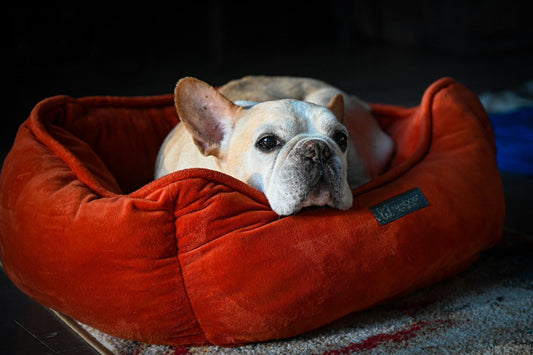
Why Is My Dog Scratching Its Bed Non-Stop? Caus...
Every Australian dog owner has likely witnessed their furry friend pawing, digging, or even “nesting” in their bed before settling down for a nap. While some bed scratching is entirely...
Why Is My Dog Scratching Its Bed Non-Stop? Caus...
Every Australian dog owner has likely witnessed their furry friend pawing, digging, or even “nesting” in their bed before settling down for a nap. While some bed scratching is entirely normal and even endearing, excessive or obsessive scratching can be puzzling, frustrating, or concerning. Why do dogs scratch their beds non-stop, and when should you worry? More importantly, what can you do about it? This article explores the causes behind this behaviour, explains when it’s a problem, and provides practical, expert-backed solutions for pet owners in Australia. Whether you’re dealing with a playful puppy or a senior dog suddenly obsessed with their bedding, you’ll find vet-approved tips, relevant Australian resources, and actionable advice to help your canine companion rest easy.
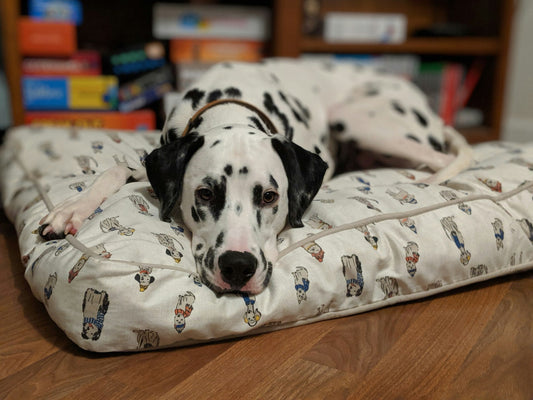
How to Make a Dog Bed at Home – Step-by-Step
Australians are famous for their love of dogs. From loyal Kelpies on rural properties to pampered Cavoodles in city apartments, our canine companions deserve a safe, cosy place to rest....
How to Make a Dog Bed at Home – Step-by-Step
Australians are famous for their love of dogs. From loyal Kelpies on rural properties to pampered Cavoodles in city apartments, our canine companions deserve a safe, cosy place to rest. Yet, not every commercial dog bed meets the specific needs of your pet or your home environment—and quality dog beds can be surprisingly expensive, especially for larger breeds or pets with special requirements.
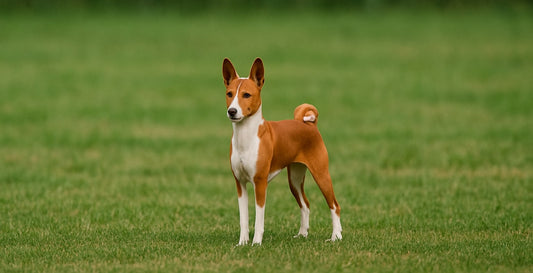
Basenji Dog Breed Guide: The Barkless Dog in Au...
The Basenji stands apart as one of the most intriguing dog breeds, especially for Australian pet lovers seeking something unique. Known affectionately as the “barkless dog,” the Basenji has a...
Basenji Dog Breed Guide: The Barkless Dog in Au...
The Basenji stands apart as one of the most intriguing dog breeds, especially for Australian pet lovers seeking something unique. Known affectionately as the “barkless dog,” the Basenji has a history and personality that captivates both experienced dog owners and those discovering the breed for the first time.
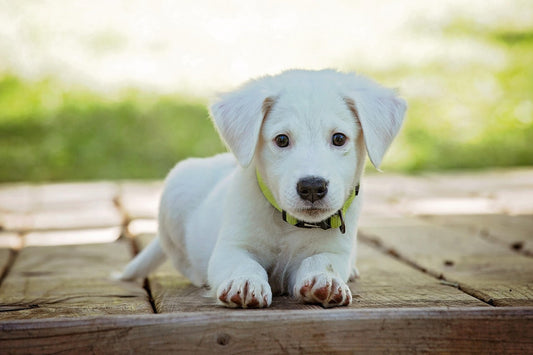
Why Won’t My Dog Sleep in Its Bed? Causes, Solu...
A good night’s sleep is as important for our dogs as it is for us. But what happens when your beloved pet refuses to use their bed, choosing instead the...
Why Won’t My Dog Sleep in Its Bed? Causes, Solu...
A good night’s sleep is as important for our dogs as it is for us. But what happens when your beloved pet refuses to use their bed, choosing instead the couch, the cold floor, or even your bed? For many Australian pet owners, this behaviour is more than a minor inconvenience—it can signal deeper comfort, health, or behavioural issues.
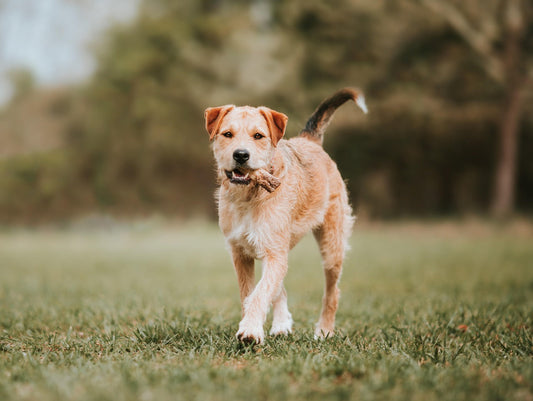
Border Terrier Australia Guide: A Small Dog Wit...
The Border Terrier is a compact, rugged dog originally bred in the border region between England and Scotland. Recognised for their distinctive “otter head” and wiry coat, Border Terriers were...
Border Terrier Australia Guide: A Small Dog Wit...
The Border Terrier is a compact, rugged dog originally bred in the border region between England and Scotland. Recognised for their distinctive “otter head” and wiry coat, Border Terriers were developed as working dogs, primarily for fox hunting and vermin control. Despite their small size, they possess remarkable stamina, courage, and tenacity—traits that have earned them a loyal following among rural farmers and modern pet owners alike.
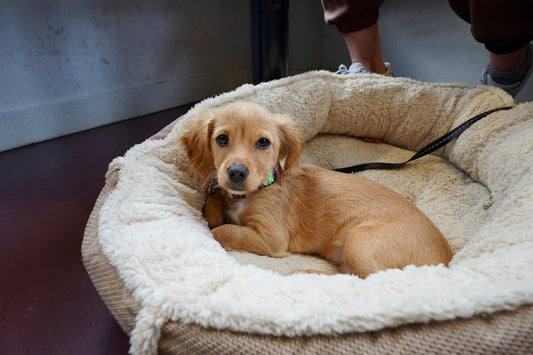
Why Is My Dog Licking Its Bed Excessively? Caus...
If your dog is constantly licking its bed, you’re not alone. Excessive bed licking can signal allergies, anxiety, or health issues—and may require a closer look. This in-depth guide explores...
Why Is My Dog Licking Its Bed Excessively? Caus...
If your dog is constantly licking its bed, you’re not alone. Excessive bed licking can signal allergies, anxiety, or health issues—and may require a closer look. This in-depth guide explores the most common causes, practical solutions, and expert Australian vet insights to help you understand and manage this puzzling canine behavior. Discover when to seek professional help and how to keep your dog happy and healthy at home.
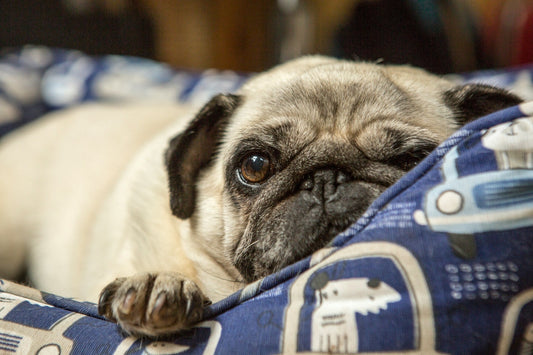
Why Do Dogs Dig Their Beds Before Sleeping? The...
Every dog owner has likely witnessed the same curious bedtime ritual: a few determined spins, some enthusiastic pawing, and a flurry of digging at the bed—sometimes until the blanket is...
Why Do Dogs Dig Their Beds Before Sleeping? The...
Every dog owner has likely witnessed the same curious bedtime ritual: a few determined spins, some enthusiastic pawing, and a flurry of digging at the bed—sometimes until the blanket is in a heap or the mat is half off the floor. Why do dogs do this, even when they have a perfectly comfortable bed or mat? Is it just quirky behavior, or is there more beneath the surface?
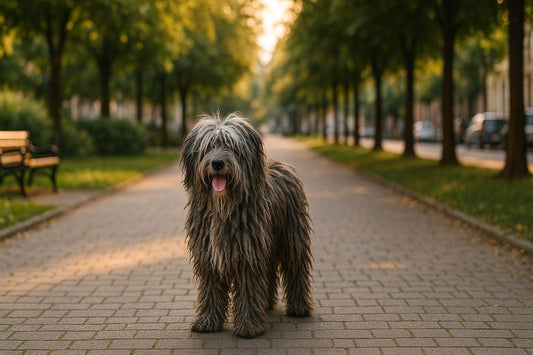
Bergamasco Sheepdogs in Australia: Unravelling ...
The Bergamasco Sheepdog is a striking and ancient herding breed, best known for its extraordinary matted “flock” coat and calm, almost philosophical nature. Originally bred in the Alpine region of...
Bergamasco Sheepdogs in Australia: Unravelling ...
The Bergamasco Sheepdog is a striking and ancient herding breed, best known for its extraordinary matted “flock” coat and calm, almost philosophical nature. Originally bred in the Alpine region of Italy, particularly around Bergamo, these dogs were indispensable partners to shepherds, managing and protecting flocks in the harsh mountain climates.
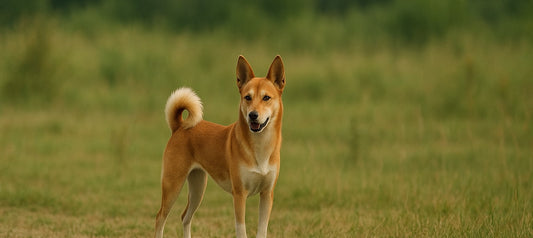
Canaan Dogs in Australia: Are These Ancient Gua...
The Canaan Dog is one of the most ancient dog breeds still living in a form close to its wild ancestors. Originally hailing from the Middle Eastern deserts—particularly modern-day Israel,...
Canaan Dogs in Australia: Are These Ancient Gua...
The Canaan Dog is one of the most ancient dog breeds still living in a form close to its wild ancestors. Originally hailing from the Middle Eastern deserts—particularly modern-day Israel, Palestine, and surrounding regions—Canaan Dogs are the result of thousands of years of natural selection. They were never engineered by human intervention in the same way as many popular breeds. Instead, they developed the sharp instincts, independence, and keen survival skills needed to thrive in some of the harshest environments on earth.
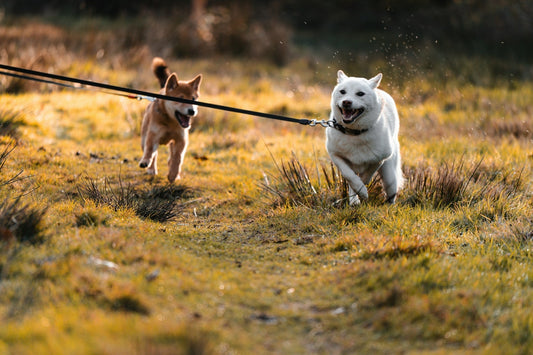
Double Dog Leash for Small Breeds: Benefits and...
Double dog leashes for small dogs enable two little dogs to stroll together. They use only a single lead for convenience and ease! They attach both collars or harnesses to...
Double Dog Leash for Small Breeds: Benefits and...
Double dog leashes for small dogs enable two little dogs to stroll together. They use only a single lead for convenience and ease! They attach both collars or harnesses to a split lead. That way, the leash holder can keep both dogs safe and close. These leashes are particularly useful for city walks, busy parks or when arms are full. Most feature tangle-free clips and light, soft webbing suitable for breeds such as Cavoodles or Mini Dachshunds. Lots of Aussie pet owners use double dog leashes.
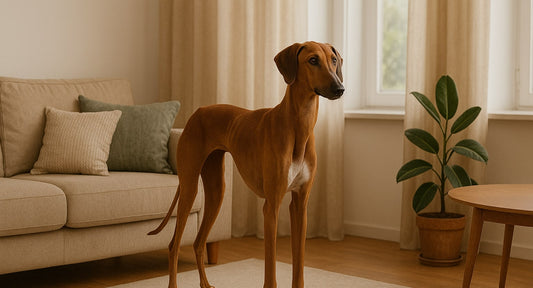
Azawakh Breed Guide: Can the West African Sight...
The Azawakh is a strikingly elegant sighthound, instantly recognisable for its slim, athletic build, deep chest, and finely chiselled features. Originating from the vast Sahel region of West Africa, the...
Azawakh Breed Guide: Can the West African Sight...
The Azawakh is a strikingly elegant sighthound, instantly recognisable for its slim, athletic build, deep chest, and finely chiselled features. Originating from the vast Sahel region of West Africa, the Azawakh’s roots are deeply entwined with the nomadic Tuareg people and other indigenous groups who relied on these dogs for both hunting and companionship. Unlike many popular sighthounds, the Azawakh has remained relatively unchanged by Western breeding trends, preserving its authentic working-dog heritage.
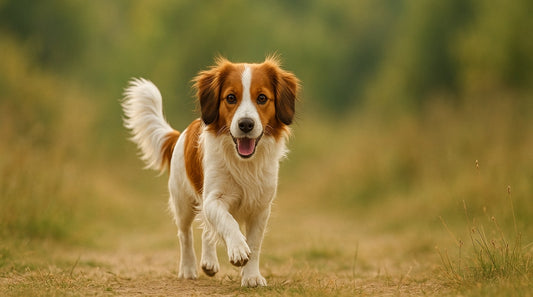
Kooikerhondje in Australia: The Dutch Duck Dog ...
The Kooikerhondje (pronounced "KOY-ker-hond-yuh") is one of Europe’s most intriguing yet underappreciated breeds—a small, cheerful spaniel whose roots trace back to 16th-century Netherlands. Known affectionately as the Dutch Duck Dog,...
Kooikerhondje in Australia: The Dutch Duck Dog ...
The Kooikerhondje (pronounced "KOY-ker-hond-yuh") is one of Europe’s most intriguing yet underappreciated breeds—a small, cheerful spaniel whose roots trace back to 16th-century Netherlands. Known affectionately as the Dutch Duck Dog, this breed was developed to work alongside hunters in elaborate waterfowl decoy systems called “eendenkooi.” Its main role was to lure ducks with playful, tail-wagging antics, gently herding them into traps for hunters.
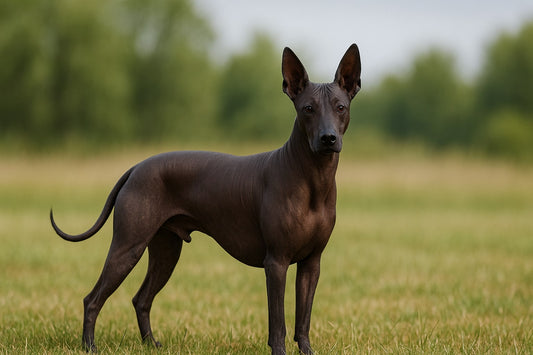
Xoloitzcuintli (Mexican Hairless) Dogs in Austr...
The Xoloitzcuintli (pronounced show-low-eats-QUEEN-tlee), commonly called the Xolo or Mexican Hairless, is among the oldest and most remarkable dog breeds still in existence. With its ancient lineage, the Xolo embodies...
Xoloitzcuintli (Mexican Hairless) Dogs in Austr...
The Xoloitzcuintli (pronounced show-low-eats-QUEEN-tlee), commonly called the Xolo or Mexican Hairless, is among the oldest and most remarkable dog breeds still in existence. With its ancient lineage, the Xolo embodies a blend of myth, science, and companionship, now making its way into Australian homes and hearts.

Tibetan Mastiffs in Australia: What to Know Bef...
The Tibetan Mastiff is a breed cloaked in legend and revered for its ancient origins as a protector of Himalayan villages, monasteries, and livestock. Recognised for both its regal presence...
Tibetan Mastiffs in Australia: What to Know Bef...
The Tibetan Mastiff is a breed cloaked in legend and revered for its ancient origins as a protector of Himalayan villages, monasteries, and livestock. Recognised for both its regal presence and uncompromising guardianship, this breed holds a unique place in canine history and is gaining recognition in Australia among those seeking a loyal, imposing, and intelligent companion.
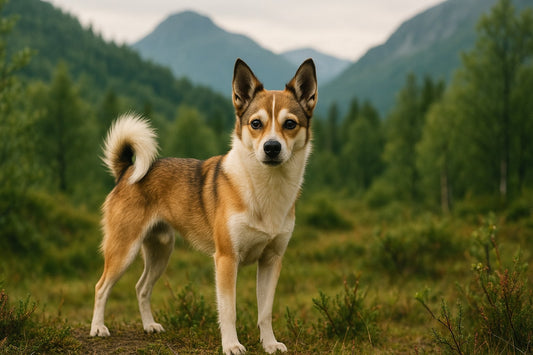
Meet the Norwegian Lundehund: Australia’s Rares...
The Norwegian Lundehund stands as one of the most distinctive and seldom-seen dog breeds in Australia. With its roots stretching back to the rugged coastal cliffs of Norway, this breed...
Meet the Norwegian Lundehund: Australia’s Rares...
The Norwegian Lundehund stands as one of the most distinctive and seldom-seen dog breeds in Australia. With its roots stretching back to the rugged coastal cliffs of Norway, this breed was once relied upon by Scandinavian fishermen for its remarkable ability to scale steep rocks and retrieve puffins—a vital source of food. What sets the Lundehund apart from every other breed is its remarkable anatomical adaptations: six toes on each foot, double-jointed flexibility, and the capacity to close its ears to protect against water and debris.
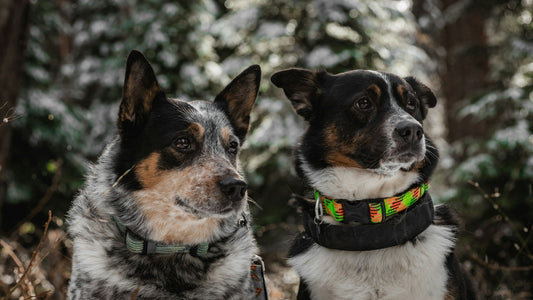
Best Collars for Dogs That Pull: Vet-Approved P...
Key Takeaways Dogs that pull on the lead may suffer from neck strain or behavioural issues if the wrong collar is used. Vet-approved collars like martingales and head halters offer...
Best Collars for Dogs That Pull: Vet-Approved P...
Key Takeaways Dogs that pull on the lead may suffer from neck strain or behavioural issues if the wrong collar is used. Vet-approved collars like martingales and head halters offer more humane and effective control. Tools alone don’t solve pulling — they must be used with proper training and positive reinforcement. Australian pet owners should be aware of state-specific laws around the use of corrective collars like prong or shock collars. Choosing the right collar depends on your dog’s size, strength, and temperament — and not all collars work for every dog. This guide helps you understand which collars are safest, most effective, and recommended by Australian vets and trainers. Introduction Pulling on the lead is one of the most common complaints from dog owners. Whether it’s a young puppy excited to explore the world or a large dog that simply doesn’t know how strong it is, leash pulling can make daily walks stressful — even dangerous. For Australian pet owners, especially those walking in busy suburbs, parks, or bushland trails, having control of your dog is essential. But the solution isn't just about brute strength — it’s about choosing the right tools that promote comfort, safety, and better behaviour. In this article, we explore the best collars for dogs that pull — those recommended by veterinarians and animal behaviour experts — and explain how to use them effectively. We'll also guide you through what to avoid, what the law says in Australia, and how to pair the right collar with proven training techniques. Why Dogs Pull on the Leash Understanding why your dog pulls is the first step in fixing it. Contrary to popular belief, pulling isn’t necessarily about dominance or defiance. It’s often more about excitement, poor leash manners, or a simple case of what gets rewarded, gets repeated. Common Reasons Dogs Pull: Excitement or overstimulation: New smells, sights, and sounds make walks thrilling. Lack of early leash training: Dogs not trained as pups may never learn proper walking etiquette. Reinforced pulling: If pulling gets your dog where it wants to go, it learns to repeat it. Breed traits: Working breeds like Huskies, Staffies, and Kelpies often pull more due to strong drive. Infrequent walking: Dogs that only walk occasionally tend to be more energetic and harder to manage on leash. 🗨️ “Dogs pull because it works. If they get to a smell or a person faster, the behaviour is reinforced.” — Dr. Kate Mornement, Australian Animal Behaviourist Risks of Using the Wrong Collar on a Dog That Pulls Using an inappropriate collar on a pulling dog isn’t just ineffective — it can be harmful. Pulling with a regular flat collar or choke chain can result in long-term damage or distress. Potential Risks Include: Neck strain and tracheal injury: Especially dangerous for small breeds and brachycephalic dogs. Increased anxiety or aggression: Painful collars can create negative associations with walking. Escape risk: Some collars are easier for dogs to slip out of when pulling. Legal implications: Certain collars, like prong and shock collars, are regulated or banned in parts of Australia. ⚠️ According to the RSPCA, aversive training tools like choke or prong collars “can cause pain and fear, and may lead to increased aggression and behavioural issues.” (source). What Vets Recommend: Principles Behind Safe Collar Use Veterinarians and animal behaviourists emphasise humane training tools that promote trust and reduce stress. This aligns with what’s known as "force-free training", which avoids pain or intimidation. Key Principles Vets Emphasise: Use collars that minimise pressure on the neck. Ensure the collar fits properly — not too tight, not too loose. Choose materials that don’t cause rubbing or irritation. Combine tools with positive reinforcement (treats, praise). Transition to simpler collars as the dog becomes better trained. 🗨️ “The most effective tools are the ones that make walking a positive experience for both dog and owner.” — Dr. Cam Day, Veterinary Behaviourist (Australia) Top Vet-Approved Collars for Dogs That Pull Not all collars are created equal. Below are the top types of collars (and alternatives) that vets and trainers frequently recommend. 1. Martingale Collars Also called limited-slip collars, martingales tighten slightly when the dog pulls — but without the harsh “choking” action of a traditional slip lead. Best For: Dogs with narrow heads (e.g., Greyhounds, Whippets) Dogs that slip out of flat collars Pros: Offers gentle correction Prevents slipping out Recommended by behaviourists Cons: Still applies pressure to neck — not suitable for heavy pullers ✅ RSPCA Australia supports martingale collars as a safer option for dogs that pull, especially when used alongside training. 2. Head Collars (e.g., Halti, Gentle Leader) These collars fit around the dog's snout and gently guide the head — and therefore the body — making pulling less effective. Best For: Large, strong dogs Reactive dogs needing more directional control Pros: Immediate reduction in pulling Helps prevent lunging Cons: Some dogs resist wearing it at first Requires acclimation and proper fit 🗨️ “Used correctly, head halters can be highly effective. But misuse can cause neck strain, so training is essential.” — Dr. Jo Righetti, Pet Behaviour Consultant 3. Front-Clip Harnesses (Not collars, but often preferred) Harnesses like the PetSafe Easy Walk or Rogz Control Harness offer an alternative by redistributing pressure across the dog’s chest rather than its neck. Best For: Dogs that pull heavily or have respiratory issues Owners who struggle with leash strength Pros: Safer than collars for heavy pullers Reduces pulling through redirection Popular in Australian obedience circles Cons: Can cause rubbing if poorly fitted May not deter very determined pullers 🐾 Note: In many Australian vet clinics, front-clip harnesses are the go-to recommendation for large breeds and rescue dogs. 4. Flat Collars (for well-trained dogs only) Simple and comfortable, these collars are suitable once your dog is trained to walk calmly. Best For: Dogs with reliable leash manners Everyday ID tag wear Caution: Never rely on a flat collar alone if your dog is still learning not to pull. Collars to Avoid for Pulling Dogs Some collar types are outdated, inhumane, or outright dangerous — especially when used incorrectly. 1. Choke Chains Designed to tighten around the neck when the dog pulls. Once popular, now widely criticised. ❌ “We do not recommend choke chains under any circumstances.” — Australian Veterinary Association 2. Prong Collars Metal collars with inward-facing prongs that dig into the skin when pulled. Banned in Victoria and under review in other states. May cause behavioural fallout, fear, and aggression. ⚠️ The RSPCA and Pet Industry Association of Australia oppose their use. 3. Shock Collars (E-collars) These collars deliver electric stimulation to “correct” behaviour. Legal status varies across Australia (banned in some states). Not recommended by any major Australian veterinary body. “Using pain to control behaviour is not only unethical — it doesn’t work long-term.” — Dr. Katrina Warren, TV vet and author Choosing the Right Collar: What to Consider Every dog is different, and the best collar for one may not be suitable for another. To select the right collar for a dog that pulls, you’ll need to assess their physical characteristics, behaviour, and environment. Factors to Consider: Size and Breed Smaller breeds (e.g., Maltese, Cavoodles) may need softer materials and minimal pressure around the neck. Larger or working breeds (e.g., Kelpies, Labradors) may benefit from front-clip harnesses or head collars due to stronger pulling. Pulling Intensity Mild pullers might do well with a martingale. Strong pullers may require a head halter or harness for safe control. Temperament Anxious or nervous dogs may become reactive with restrictive collars. Confident dogs may test limits and need something more secure. Walking Environment Suburban footpaths vs bush trails vs beach walks—some collars handle moisture or rough terrain better. Training Level Dogs early in training need more control. Trained dogs may graduate to a padded flat collar. How to Fit a Collar Properly Poor fit is a common issue that can make even the safest collar ineffective—or harmful. General Fitting Guidelines: The 2-Finger Rule: You should be able to slide two fingers comfortably between the collar and your dog’s neck. Measure Before You Buy: Use a soft measuring tape to measure your dog’s neck at its base. Watch for Signs of Discomfort: Rubbing or hair loss Coughing or gagging on walks Frequent pawing at the collar Slipping out or constant re-adjustment Tips for Head Collars and Harnesses: Ensure the nose loop (for head collars) isn’t too tight — your dog should be able to open their mouth. Chest harnesses should sit snugly on the breastbone, not press against the armpits. 🗨️ “A poor-fitting collar can lead to discomfort, skin damage, or worse — especially for dogs that pull hard.” — Dr. Melissa Meehan, Vet & Behavioural Consultant Training Tips for Dogs That Pull A collar is just a tool. To see lasting results, pair it with consistent training that encourages your dog to walk calmly on a lead. Foundational Training Techniques: Reward-Based Walking: Reward your dog with treats or praise when they walk beside you without pulling. Stop walking immediately when they pull — teach them pulling gets them nowhere. Redirection: Use a cue like “Let’s go!” and change direction often to keep your dog focused. Short, Frequent Walks: Consistency is better than duration. Several short walks help reinforce good habits. Engage a Certified Trainer: Seek a professional who uses positive reinforcement methods. Avoid trainers who rely on punishment-based tools like prong or shock collars. 🔗 For trainer directories, visit: Delta Institute (Australia) or PPGA Australian Perspective: What Local Vets and Laws Say Australia has some of the strictest animal welfare laws in the world, particularly concerning aversive training tools. Legal Status of Collars in Australia (as of 2025): Prong Collars: Banned in VIC; under review in NSW and ACT. Shock Collars: Banned in parts of SA and WA. Choke Chains: Not illegal but strongly discouraged by vets and the RSPCA. Martingale, Head Collars, and Front-Clip Harnesses: Fully legal and recommended. Trusted Brands Available in Australia: Rogz Utility Control Collar (available at PetCareShed) Halti Optifit Headcollar PetSafe Easy Walk Harness Black Dog Wear Training Gear (Australian-made) 🗨️ “Responsible collar use means choosing what’s humane and effective. Australia leads the way with a shift to force-free training methods.” — Association of Pet Dog Trainers Australia Expert Commentary and Vet Insights Multiple Australian professionals advocate for smarter collar choices based on evidence, not tradition. 🗨️ “We’re seeing a move away from force-based collars in vet clinics. Behavioural injuries are real, and prevention starts with the right gear.”— Dr. Bronwyn Hodgson, Sydney Animal Hospital 🗨️ “Using a collar that aligns with how a dog thinks and learns is more powerful than forcing control.”— Stephanie McColl, Delta Accredited Trainer, Melbourne 🗨️ “Insurance claims related to neck injuries are rising in dogs that wear outdated collars. Choose gear that protects, not punishes.”— PetSure Australia 2024 Industry Report Related Products from PetCareShed At PetCareShed, we stock safe and trusted collars recommended by vets and trainers: Rogz Control Collar with Locking Buckle Halti Headcollars and Training Leads PetSafe Easy Walk Harness – Front Clip Martingale Training Collars in Soft Nylon Comfort-Fit Flat Collars for Trained Dogs ✅ Free shipping across Australia💬 Need help choosing? Contact our product specialists. Frequently Asked Questions Are no-pull collars safe for puppies? Yes, many are — especially front-clip harnesses and head halters. Always introduce them slowly and pair with positive training. What if my dog still pulls with a no-pull collar? Consider a professional trainer. No collar will work without consistent reinforcement and behaviour shaping. Can I use a training collar with a retractable leash? It’s not recommended. Retractable leashes encourage pulling and reduce your control — especially with corrective tools. How long does it take to train a dog to stop pulling? This depends on age, breed, and consistency. Some dogs respond in days, others may take weeks to months of practice. Are head halters cruel or uncomfortable? Not when fitted properly. They’re like a horse halter — they guide, not punish. Always supervise use.
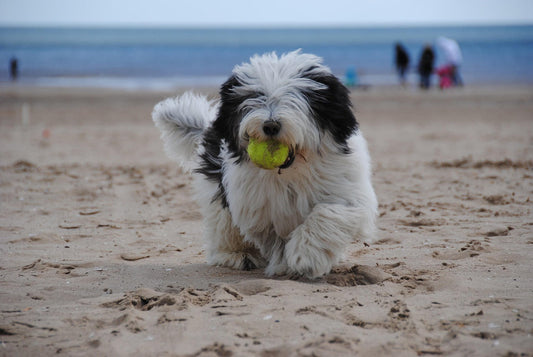
Polish Lowland Sheepdog in Australia: Grooming,...
The Polish Lowland Sheepdog is an intelligent, medium-sized herding dog with a long legacy tied to the rural fields and farmlands of Poland. In its homeland, this breed is affectionately...
Polish Lowland Sheepdog in Australia: Grooming,...
The Polish Lowland Sheepdog is an intelligent, medium-sized herding dog with a long legacy tied to the rural fields and farmlands of Poland. In its homeland, this breed is affectionately called the Polski Owczarek Nizinny or PON, which translates to "Polish Lowland Sheepdog." Over centuries, these dogs have been prized for their keen problem-solving skills, robust health, and an unwavering devotion to their flock and family.
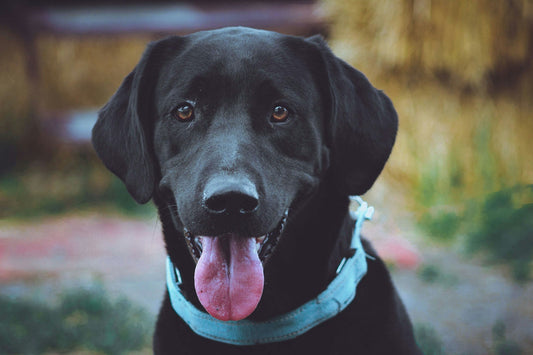
What Is the Safest Collar for a Dog? Vet-Approv...
For many Australian dog owners, a collar is more than just a fashionable accessory — it’s a critical piece of safety gear. Whether it’s holding identification tags, attaching a lead...
What Is the Safest Collar for a Dog? Vet-Approv...
For many Australian dog owners, a collar is more than just a fashionable accessory — it’s a critical piece of safety gear. Whether it’s holding identification tags, attaching a lead for daily walks, or signalling that a dog has a home, collars play a vital role in your dog’s everyday life. But not all collars are created equal. A poorly designed or incorrectly fitted collar can cause serious problems. Dogs have been known to suffer from tracheal injuries, skin infections, and even escape from their collars, which can lead to frightening scenarios. According to the RSPCA, a significant number of stray dogs found in Australia each year were wearing collars that either broke or slipped off.
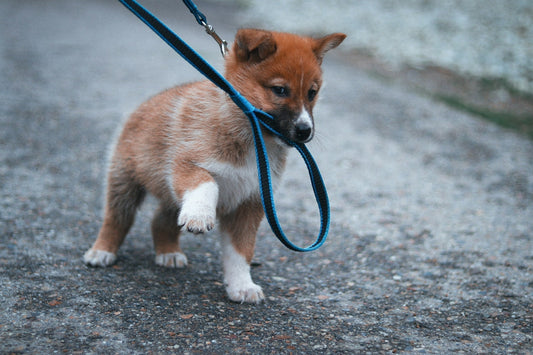
Slip Rope Leash for Small Dogs - Benefits and U...
Key Takeaways Slip rope leashes control little dogs sweetly. Ideal training and everyday walk leashes in any Aussie situation. The straightforward loop design makes these leads easy to use. You...
Slip Rope Leash for Small Dogs - Benefits and U...
Key Takeaways Slip rope leashes control little dogs sweetly. Ideal training and everyday walk leashes in any Aussie situation. The straightforward loop design makes these leads easy to use. You can easily tweak them for a snug but comfortable fit around your mini pal’s neck! Opting for lightweight and high quality stuff such as soft nylon or cotton avoids irritation. This makes these slip leashes strong and secure for small dog breeds. Always tighten the slip to a comfortable degree without restricting movement. Watch your dog carefully to prevent choking hazards! Slip rope leashes are functional for crowded parks, bushwalks, or days out on the beach. It’s really important to evaluate your dog’s temperament and look for alternatives if your dog is anxious, or has breathing difficulties. “Routine training, positive reinforcement and constant check of the leash are very important.” They make safe and fun walks for you and your small dog! Slip Rope Leashes for small dogs are lightweight leads made from strong rope. They have a loop that goes over the dog’s head, acting as a collar and a lead. It’s something trainers and walkers – including in Australia – are fond of using. They give instant control and help with training commands or loose-lead walking. Numerous small dog parents love their simplicity. This is particularly pronounced when wandering through parks or crowded pavements in cities such as Sydney or Melbourne. They’re ideal for dogs that don’t pull much and require a gentle guide, not a tight hold. Here, we look at how to know when to use a slip rope leash. We'll even throw in its advantages, safety considerations, and how to size one up for your little buddy. What Is A Slip Rope Leash? What is a slip rope leash? It creates a loop that tightens when you put pressure. It simply slides over the dog’s head and is held in place sans additional buckles or clips. For small dogs, this leash can be made with lighter materials such as nylon or cotton. Slip leashes are especially effective,” says Dr Emily Blackwell, a canine behaviourist. They offer an easy way to go for a controlled walk, particularly for smaller breeds that need soft handling,” she says. 1. The Basic Loop Design Explained It’s a simple loop design. The rope passes through a ring to create a slip loop, which becomes tighter or looser based on the dog's movements. For small dogs, the loop needs to be snug but not tight – you should be able to fit two fingers in to prevent choking. This style allows for a firm hold during walks. So simple for owners to use, even if they’re newbies on lead handling! 2. How It Differs From Collars Unlike typical collars, slip leashes don’t have set-placement buckles. They are less likely to slip off and make walks safer for small dogs that are wiggly. Used correctly, the leash softly guides direction. Regularly checking the fit can help prevent injury. 3. Materials Suited for Small Mates Nylon, cotton, and soft rope slip leashes are ideal for comfort and durability. Lightweight fabrics prevent the leash from weighing down delicate necks, making them a perfect alternative for leash training and daily walks. 4. Why Adjustability Matters for Littlies Because you can adjust the loop size of the nylon slip lead dog leash, it’s a perfect fit for any dog's neck. Owners can swap the fit for training purposes or play, keeping their canine companion safe and comfortable. 5. Built for Aussie Adventures? Slip leads, made from durable nylon, are great for bush, beach, or city walks, providing gentle guidance for your energetic pup. Slip Leashes: Good or Bad? Slip rope leashes for small dogs are both lauded and lambasted by Australian pet owners and trainers alike. They’re often used for training and everyday walks. Their effectiveness and hazards depend on when and how you use them. Consider the pros and cons (for and against) using a slip leash before choosing one. Consider your dog’s temperament, comfort and day-to-day requirements. The Upsides for Tiny Dogs Slip leashes give handlers better control. They provide soft direction, particularly useful for controlling bouncy or reactive small pooches. They’re lightweight so won’t drag down small breeds like Chihuahuas or Mini Dachshunds. Easy to slip on and off for many owners – particularly dogs that wiggle when you put harnesses on. Trainers around Australia, such as Steve Austin, point out the benefits of slip leashes. They make teaching dogs to walk nicely easy, tightening when the dog pulls and relaxing when the dog softens. That feedback can help you reinforce good walking habits. Potential Downsides to Consider Used incorrectly, slip leashes are dangerous. I’m not a fan of slip leads because if they’re pulled too tight or used unsupervised they can choke or hurt. Anxiety-prone dogs often do not react well to the pressure on their necks. Inappropriate use of collars or leashes can be harmful or upsetting. Supervision on walks is key. Proper fit is just as important—the rule of thumb is to fit two fingers between collar and neck. You don’t want your dog to be on a slip leash unless they are 6 months old and have basic obedience, the pros say. Our Honest Take on Them Slip leashes, such as the nylon slip lead dog leash, are by no means a panacea, and there’s no advantage to every dog. Owners should balance their pet's needs and temperament, especially when considering leash training techniques. Safe Slip Leash Use for Pups Slip rope leashes are convenient, but there’s a few considerations to take into account when using them with small dogs. In Australia, where the city streets meet the bush trails, the ideal approach ensures pups are safe and happy. You want to pay attention to your dog's comfort - little dogs have delicate necks, and an overly-tight leash can do damage. Make sure you can fit two fingers between the leash and the dog’s neck. (Vets frequently recommend this!) Say no thanks to slip leashes for dogs under six months! Their neck cartilage is soft and trachea collapse a danger. Are They Safe for Smalls? When fitted properly, slip leashes will prevent escapes. It's particularly great for small breeds that have a habit of wriggling out of their collars! Opt for small sized leash to snip choking Panics. Never leave an excitable or reactive dog alone on a slip leash - sudden jerks can injure them! For flat-faced breeds, such as Pugs and French Bulldogs, experts caution against slip leashes on breathing grounds. Vet & Trainer Views Both Aussie vets and trainers agree: slip leashes need careful training and supervision. Hearing lots of people recommend to use them in conjunction with positive reinforcement, rather than as a standalone training aid. Harnesses are safer for younger pups or sensitive breeds,” offered Dr Emily Stokes, a Sydney vet. Trainers advise using slip leashes with professional support for optimum use. Must-Have Safety Features Seek out leashes with stoppers or limited-slip adjusters. Materials should be smooth, soft, without rough seams. Reflective strips are important for night walks. Ergonomic handles assist, particularly for urban walks. Preventing Choking Dangers Adjust frequently, leave the fit relaxed, and watch out for stress signals. Teach your pooch leash cues. Replace worn leashes immediately to prevent a sudden break. Choose a safe slip leash that is sized for your dog’s breed and weight. Using Your Slip Leash Right Correct use of a slip rope leash for small dogs depends on a couple of things. Regular, conscious practice is key. This Australian leash style is all the rage for its ease and mastery, fusing collar and lead in one. Its O-ring design allows you to loop and tighten the leash. The trick is getting that fit just right–snuggly, not tight! A good rule: always fit two fingers between the collar part and your dog’s neck. This makes it comfortable, while still holding the leash securely. Regular practice breeds familiarity for both you and your dog. Consistency in cues and commands helps reinforce expectations. Quiet, controlled walks really help. Dogs sense your mood, so a calm, relaxed attitude can relieve tension and produce better behaviour. Dogs respond best, says Sydney-based vet Dr Kate Mornay, when their handler is calm and consistent. This is particularly the case with slip leashes. Nailing the Perfect Fit Be careful to adjust your slip leash before you set out every time. Make sure it’s not too loose or too tight - look for that two-finger gap! As your pup matures, check the fit – small dogs can warp quickly in their formative years. Make sure the leash sits high on the neck, not sliding down or constricting movement. Gentle Release Technique Loosen your hold (don’t pull back). Positive reinforcement, whether a treat or a kind word, is what allows your dog to associate loose leash walking with good. Giving your dog safe opportunities to explore may increase confidence, but it requires patience. Mistakes Owners Often Make Mistakes include overtightening and failure to check fit. One is erratic commands, which muddle your pup. Training should remain positive – don’t correct harshly, as this will create fear. Learning your dog’s signals will avoid slips or jerks. Tips for Smooth Walks Keep your hold light. Treats or favourite toys work for motivation. Breaks are for comfort on longer walks. Frequent little sessions can solidify desirable behaviours, turning the slip lead into an everyday weapon. When to Use (And Not Use) Selecting the appropriate small dog lead, such as a soft rope slip leash, requires some consideration. While slip lead dog leashes can be effective alternatives, they may not suit every dog or situation. Knowing when to reach for one can make daily walks easier for you and your canine companion. Ideal Times for a Slip Lead Slip leads are good for formal training, particularly for small dogs who are learning polite walking. In Australia, a lot of trainers like them for fast on-off access at obedience classes or in controlled environments. In busy urban areas, a slip lead ensures your active pooch is close by. It provides distinct feedback with a light amount of pressure. For energetic dogs, the slip design provides handlers with extra guidance, aiding in creating better habits on the go. When you’re out bushwalking or at the beach, the simple loop design means you can leash up your dog in a hurry. This is a great benefit to preventing your furry friend escaping in open spaces. Please take note of this advice from experts, such as Sydney-based behaviourist Dr. Tanya Mitchell: slip leads must not pinch. Always make sure that you can fit two fingers comfortably between the collar and your dog’s neck! When to Skip the Slip Lead Slip leashes aren’t appropriate for every dog or every situation. Dogs with aggressive tendencies, neck injuries, or breathing trouble (think pugs or shih tzus) should wear a harness. For puppies under six months, or those who are still learning their basics, a fixed collar (or harness) is safer. If your small dog pulls too hard, it can hurt their neck. Getting excited around other animals can stress them out too. Comfort and safety must come first. Aussie Park & Trail Smarts Australia’s parks and bush trails present their own challenges. Kangaroos, birds, and off-lead dogs can tempt even the calmest pet. Always have the slip leash adjusted snugly (but not too tight). Be informed about local leash laws – some councils mandate fixed leads. On busy tracks, bring your dog in close and keep an eye out for wildlife. Choosing a Quality Slip Leash When selecting a slip lead dog leash for small dogs, prioritize their comfort for a positive experience. Not all soft rope slip leashes are created equal; quality materials, construction, and features significantly impact the leash's performance and longevity. Right Size for Your Little Mate Getting the correct size begins with a good measure of your dog’s neck. It’s soft tape for comfort. Ensure you can fit two fingers between the lead and the neck - this is to prevent choking. For small breeds, a 10mm wide rope is the way to go as it won’t dig into skin. It should be snug, but not tight. Always check breed and neck size. Brachycephalic breeds such as pugs or shih tzus require added extra care because of breathing problems. Brand size guides are useful, so don’t skip checking them! Durable Materials: What to Look For A sturdy slip lead employs materials that hold up to daily walks. Nylon is a popular one! Polypropylene is ideal for wet pursuits because it floats – great for dog owners taking their dogs close to water. Weather-resistant coatings and tough stitching make for longevity. A leash that frays or splits easily isn’t worth it. Always check for strong joinery and clean finishes. Features That Actually Help Useful extras enhance value. Padded handles prevent sore hands, while reflective strips help you stay visible in low light. Adjustable lengths allow you to switch control as required, ideal for varying walks. Leash Care for Longevity Wash off dirt and grime to keep the leash clean. Look out for frays or weak points regularly. Store it dry and out of direct sunlight to prevent weather damage. Conclusion Slip rope leashes offer little dogs a practical, easy to use solution for walking and training. Aussie pet owners frequently use them for fast errands, vet check-ups, or training at the park. You have decent control without much kit. When made properly, a slip leash sits light on your dog but brings them in close if need be. Look out for soft rope and a smooth slide—not too tight, not too loose. Keep an eye on your pup’s body language, and don’t leave them tied up on one. Give a couple of Aussie brands a go, see what suits your style and your dog’s needs. Have a slip leash story or tip? Share your yarn in the comments below! Frequently Asked Questions What is a slip rope leash? A nylon slip lead dog leash is a lead with a noose that slips over your little dog’s head. It constricts if your dog pulls, providing gentle guidance, and loosens when they cease. Are slip rope leashes safe for small dogs? Yes, if used appropriately with a nylon slip lead dog leash! Always supervise your dog and adjust the slip lead dog leash to sit high on the neck. When should I use a slip rope leash? Use a soft rope slip leash for short walks, training purposes, or quick trips; it’s brilliant for non-pulling, already-leash-trained dogs. Can slip rope leashes hurt my small dog? If incorrectly fitted or used roughly, a nylon slip lead dog leash can injure your dog’s neck. Always treat softly with a gentle slip lead dog. What should I look for in a slip rope leash for small dogs? Choose a soft rope slip leash that is 1m to 1.5m long, ensuring it features a stopper to secure the loop in place for effective leash training. Do slip rope leashes work for puppies? Yup, but only briefly and for soft training with a slip lead dog leash. Always supervise and never leave it on an unsupervised puppy. Are slip rope leashes legal in Australia? Always adhere to local council regulations and use your nylon slip lead dog leash responsibly to ensure your dog is safe.
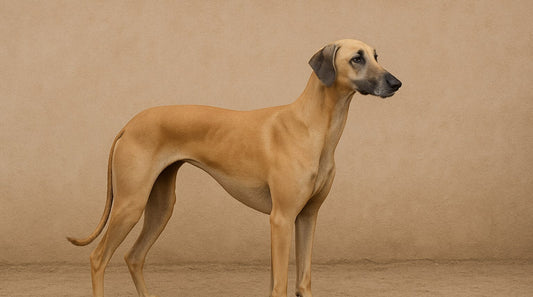
Sloughi Breed Guide: Can the Arabian Greyhound ...
The Sloughi, affectionately known as the “Arabian Greyhound,” is a breed steeped in history, elegance, and mystery. Originating from North Africa—most notably Morocco, Algeria, Tunisia, and Libya—the Sloughi has served...
Sloughi Breed Guide: Can the Arabian Greyhound ...
The Sloughi, affectionately known as the “Arabian Greyhound,” is a breed steeped in history, elegance, and mystery. Originating from North Africa—most notably Morocco, Algeria, Tunisia, and Libya—the Sloughi has served as a loyal companion to the Berber and Bedouin people for centuries. Renowned for its speed, endurance, and keen eyesight, this sighthound was traditionally used for hunting game in harsh desert landscapes.
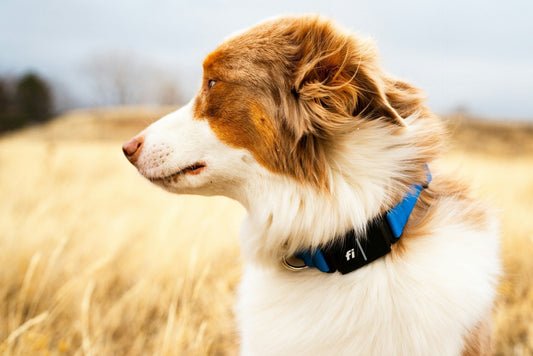
Do Vets Recommend Prong Collars? What Experts S...
Prong collars are controversial training tools that many Australian veterinarians and behaviourists strongly discourage. This article explores expert opinions, the physical and psychological risks of using prong collars, and the...
Do Vets Recommend Prong Collars? What Experts S...
Prong collars are controversial training tools that many Australian veterinarians and behaviourists strongly discourage. This article explores expert opinions, the physical and psychological risks of using prong collars, and the legal restrictions in various Australian states. Backed by veterinary guidance, it offers practical, humane alternatives to ensure your dog’s safety and behavioural success—without fear or force.
